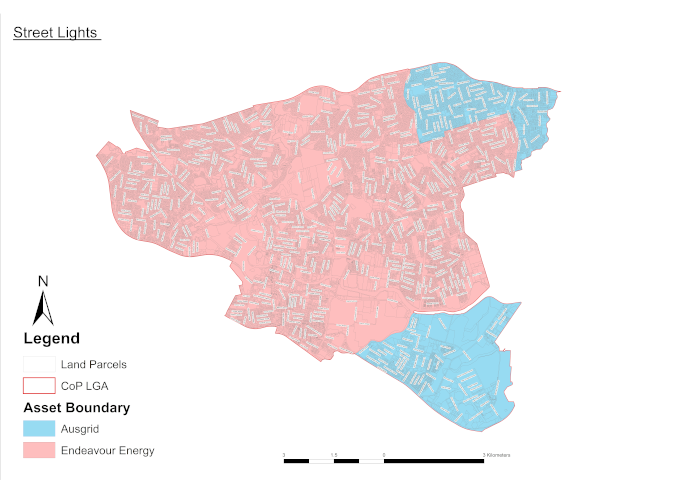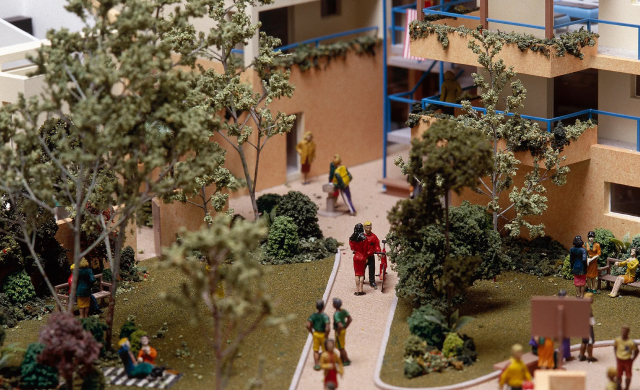Due to recent extreme weather, Council is currently experiencing a high volume of tree related requests, resulting in extended delays to non-urgent tree inspections and works.
Please be reassured that dangerous and urgent matters are attended to as a priority and all requests received are placed into our inspection schedule.
To assist us in managing the current large volume of requests, please enter a single request only for each service required.
We understand all requests are important, appreciate your patience and apologise for any inconvenience.
For queries related to Power line clearance pruning (and the removal of remaining debris), please call Ausgrid on 13 13 65 or Endeavour Energy on 13 37 18.
Please view our power line clearance map* to identify the relevant provider for your area.
What is a public tree?
(Back to top)Public trees are all trees located on land owned or managed by the City of Parramatta Council.
This includes all trees located within parks, reserves, bushland, streets and nature strips.
The state government also manages public trees within the City of Parramatta including at Parramatta Park.
Public trees we manage
Council manages approximately 30,000 trees throughout the Local Government Area (LGA) which play a vital role as part of our Urban Forest.
Our public trees are valuable assets and play an essential role in making the City an attractive, healthy and sustainable city. The benefits of trees includes:
- helping to cool our city
- improving air quality
- creating and maintaining habitat
- reducing stormwater runoff and
- improving the streetscape and in turn property value.
We understand the importance of carefully managing and enhancing our public trees and invests in a wide range of arboricultural activities including:
- tree planting
- tree pruning and maintenance
- pest and disease control
- root protection
- soil management
These management and maintenance activities are guided by our goal to increase our urban forest canopy cover to 40% by 2050.
Tree planting program
(Back to top)We know the social, environmental and economic values of trees, and we have invested in increasing the number of trees planted in our natural areas, street nature strips, parks and reserves.
We have a multi-year approach to our tree planting programs which includes a planning phase that reviews our tree management asset system to identify trees nearing their end of life and identifies suitable locations for planting.
Our qualified landscape and arboricultural staff then work with nurseries to ensure the species, size and quantity requested are grown and ready for the tree planting season.
The street tree planting program includes site preparation, planting, mulching and watering to establish the tree. Once planted, each tree is added to our asset and maintenance programs.
Each year Council plants approximately 2000 advanced tree stock species including both native and non-native trees.
A further 100,000 indigenous species including 10,000 tree species are planted annually in our bushland areas.
Replacement trees
We are aware of the loss of trees during development processes. We have successfully advocated to the state government that the replacement trees from the Parramatta Light Rail be planted within the LGA and not in a different locality, which often happens.
The result is that the replacement trees are being planted on streets aligned to the Parramatta Walk Ways Strategy and the Parramatta Bike Plan to improve aesthetic amenity and to provide shade along popular walking and cycling routes.
Request a Council funded street tree
(Back to top)You can request for a tree to be planted on the nature strip in front of your property. The cost of planting the tree is funded by Council.
Once we receive your request, our Public Tree Management Team will review it and consider a range of factors including:
- the size of the nature strip
- power lines and underground services
- driveway, parking and footpath locations
- other trees within the streetscape
Our team will make a decision if a tree can be planted on the site and the type of tree.
Tree maintenance and management
(Back to top)We recognise the importance of tree maintenance and management and have a dedicated team for the ongoing inspection, assessment and management of the Urban Forest.
Our team perform both proactive and reactive assessment of the LGA's tree population.
Maintenance
Tree inspections
Tree inspection are carried out by a qualified arborist and may include assessment of the tree species, age, health and structural condition and pests and diseases.
The inspection will identify any potential work requirements, which would then be actioned through Councils tree teams and contractors.
Required tree works will always be prioritised on a risk basis first and foremost to ensure public safety. Determination as to any potential risk that a tree may pose, will be made by one of Councils qualified arborists.
Maintenance actions can include:
- removal of major dead, dying or dangerous branches
- pruning to allow clearance for pedestrians and vehicles
- pruning to allow clearance to buildings and essential infrastructure
- formative pruning
- health, pest and disease assessment
*Please note that the clearances prescribed in the above diagram are the maximum clearances that Council may offer. There may be situations where tree size, shape and habit, or environmental and site constraints inhibit works to be completed in line with those defined.
Requests we won't action
We occasionally receive street tree requests that we won't be action. These include pruning or removing street trees:
- for amenity views
- for solar access
- where a tree is causing minor shading
- to reduce leaf or fruit fall, sap drop, bird droppings or similar natural processes
- to reduce branches overhanging a private property boundary
- relating to minor structural damage to a footpath or driveway
- relating to blocked pipes, unless the damage is proven to be serious and recurring. Root pruning, replacement of old dilapidated pipes, or use of root barriers may solve the problem (sufficient evidence would need to be provided)
- relating to unsubstantiated fears about healthy trees failing
- if a tree is dead or dying but provides habitat to native wildlife providing that the tree does not pose a significant risk to persons or property
- where are concerns about bush fire hazard, where the land is not within bush fire prone land, as defined by Council’s Bush Fire Prone Land Map (removal of trees or other vegetation for bush fire hazard reduction is governed by the Rural Fires Act 1997).
- Relating to any other reason that may violate laws and regulations that protect trees
While we try to maintain public trees and the action of tree removal is a last resort, public safety is always a priority.
As with all living things, trees grow, age and eventually die. There are times when tree removal is needed to ensure proper management and safety of our public spaces.
Once the request has been lodged, one of Council’s qualified arborists will attend site to complete an initial assessment of the tree and the person making the request will be contacted and advised of the next steps.
Managing public trees
(Back to top)Our arborists deal with many issues with trees on public land and Council's responsibilities.
Below are some common requests that our arborists receive.
-
Our Public Tree Team won't be able to directly assess insurance claims relating to trees. Tree assessment and insurance claims are dealt with separately.
If you want to make an insurance claim relating to tree issues please contact Customer Service Centre Team on (02) 9806 5050 or at council@cityofparramatta.nsw.gov.au
-
As part of trees natural biological processes they exhibit falling leaves, branches, flowers and fruit. They will also provide valuable habitat to wildlife, which in turn may result in some mess from droppings.
Council will not undertake tree pruning or removal requests relating to leaf and fruit fall.
Residents are encouraged to tidy up the leaf and fruit fall and to place within their garden bin.
-
What we do
Council will provide clearance of branches encroaching the roof or external face of your property by up to 2m from the nearest branch part.
What we don't do
Council will not prune or remove trees simply because they overhang your property, or property boundary other than within the clearances prescribed above.
-
While we support renewable energy, we have an obligation to retain and maintain our natural assets.
Where possible we will endeavour to provide street tree pruning that will assist in the maintenance and installation of solar panels, in accordance with relevant standards, policies, and environmental and planning instruments.
-
Public trees
Our Public Tree Team are on call 24/7 for incidents relating to Council managed trees during a storm.
Call us on (02) 9806 5050 to a storm damaged public tree.
Trees on private land
If a storm damaged tree is on private land please call the SES on 132 500 for assistance.
-
Termites are a natural part of the ecosystem. We don't treat trees for termite infestation.
We will assess the health and structural condition of a tree relating to termites and take action where required.
It is the responsibility of the property owner to protect their own assets from pests such as termite activity, as part of undertaking adequate property maintenance.
-
The best way to protect your property against potential issues with tree roots, is to ensure the proper maintenance of pipes, infrastructure and buildings.
Roots from large trees may at times come into contact with buildings and pipes, in cases where the pipes and building footings are properly designed and maintained this is rarely an issue, tree roots are a secondary issue with faulty infrastructure generally being the primary cause.
Council may provide advice on the possibility of mitigation measures to prevent future damage.
It is the property owner’s responsibility to carry out any required work on private property and Council will complete any required works on Council land.
Power line clearance
(Back to top)The management and pruning of street trees for power line clearances is undertaken by energy network providers.
Our LGA is serviced by Endeavour Energy and Ausgrid
Legal responsibility
Endeavour Energy and Ausgrid have legislative responsibility to ensure a clearance zone around their power lines. Please contact them directly if you have any concerns.





